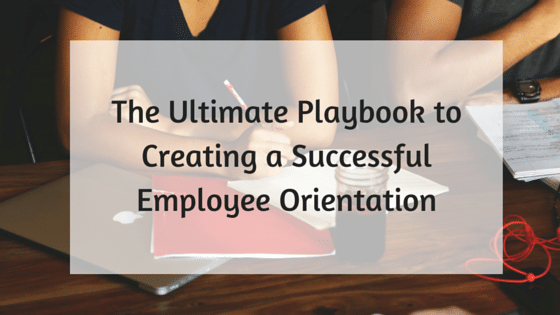Delivering a successful employee orientation can not only ensure that department procedures and tasks are followed properly, but it can also lead to happier and more productive employees.
Employee orientation shouldn’t be thought of as an “information dump”, but instead as a way to assimilate the new employee into the company values, culture and goals. Orientation provides an opportunity for institutions or companies to show employees everything that happens behind the scenes, a perspective they probably didn’t have during the interview process.
Below, we outline 7 key factors to making your new employee orientation successful, meaningful, and effective for your company and your employees.
Establish Your Goals
Creating clear objectives of what you want your employees to learn from the orientation is an important step that should come before content creation. Avoid vague objectives like “learn new procedures” and try to focus on actions. Be sure to connect new employees with co-workers and supervisors by providing contact details and introductions to current employee roles.
Keep the information concise
After you decide your goals, create your content in a simple, easy-to-process manner. Only include information that is absolutely necessary and use bullet points and hierarchies. Begin each module with a clear objective, then provide the additional information and resources that support that objective.
Utilize visuals
Your new employees will most likely vary in learning styles. According to a recent study, 65% of the population is visual learners. Deliver your content in a variety of ways including infographics, charts, audio elements and videos. Include images of actual employees (not just stock photos) to familiarize faces with the new employees and to personalize the orientation.
Offer Easily Accessible Resources
It isn’t often that an employee retains every single bit of information presented in an orientation. Offer your employees an area where they can download additional resources and information they will need to effectively do their jobs. Studies on employee satisfaction have shown that “opportunities to use skills and abilities” is the top driver of satisfaction, so be sure to make projects and tasks transparent in order to provide the most opportunities. It can also be helpful to include the history of past company decisions, as this can give new employees insight on the path the company has taken over the years.
Be flexible
According to a study by PWC, employees of all generations prioritize flexibility in their jobs, which can includes schedules, location or office setup. With the current state of technology, employees should be able to access company information and processes wherever they are, which is why a responsive online orientation is crucial to supporting flexibility. Just like with your customers, you want to make learning as easy as possible for employees.
Incorporate Company Culture
According to a recent student by Deloitte University Press, HR managers consider culture and engagement their number one challenge in the workplace. Introducing the company culture from the start will not only allow employees to feel “a part of the team”, but it will also improve team dynamics which can lead to greater productivity. Not sure how to define your company culture? Take a page from Buffer, a software company known for its positive culture.
Measure Success
Every “playbook” tends to end in measuring your campaign, project or in this case, orientation. That’s because defining your success is crucial to being able to effectively analyze your orientation and improve upon it. The most effective way to measure success is to solicit immediate feedback after completing the orientation through online surveys. In your surveys, you should not only check to see that your initial goals were met (for example, “What are our company values?”), but you should also ask them to rate their overall onboarding experience. Be sure to leave some questions open-ended, as direct quotes can often be the most helpful.
For more information: Check out Comevo’s Online Orientation that helps institutions and companies streamline their orientation process and keep it up to date.






